Imagine stepping through time, donning the sophisticated garb of ancient civilizations, feeling the transformative fabrics of eras long gone, and tracing the silhouette of modern style. Menswear, a journey spanning centuries, stitches together threads of history, craftsmanship, and culture, creating a tapestry of timeless elegance and sartorial heritage.
In this exploration, we navigate the corridors of time, uncovering the fascinating evolution of menswear. From ancient trades shaping the fabric of early clothing to the dawn of fast fashion and its ethical quandaries, this journey unveils the vibrant story behind the garments that define men’s style.
Join us as we traverse through epochs, exploring the transformative milestones and captivating fashion highlights that propelled classic menswear into the contemporary realm. From humble beginnings to the fashion runways, this journey is a celebration of timeless sophistication and the ethical virtues embraced by the modern gentleman.

Table of Contents
Early Trades and Craftsmanship in Clothing Production
The history of garment-making traces back to the earliest human civilizations, where clothing served as a fundamental necessity for protection against the elements. Initially, clothing was crafted from materials such as animal skins, leaves, and natural fibers. The labor involved in creating these garments was a testament to human ingenuity and craftsmanship.

In ancient societies, the production of clothing was a laborious process handled by skilled artisans and tradespeople. These individuals possessed specialized knowledge passed down through generations, mastering techniques to manipulate raw materials into wearable garments. Weavers, tailors, and dyers were among the early craftspeople integral to the clothing trade.
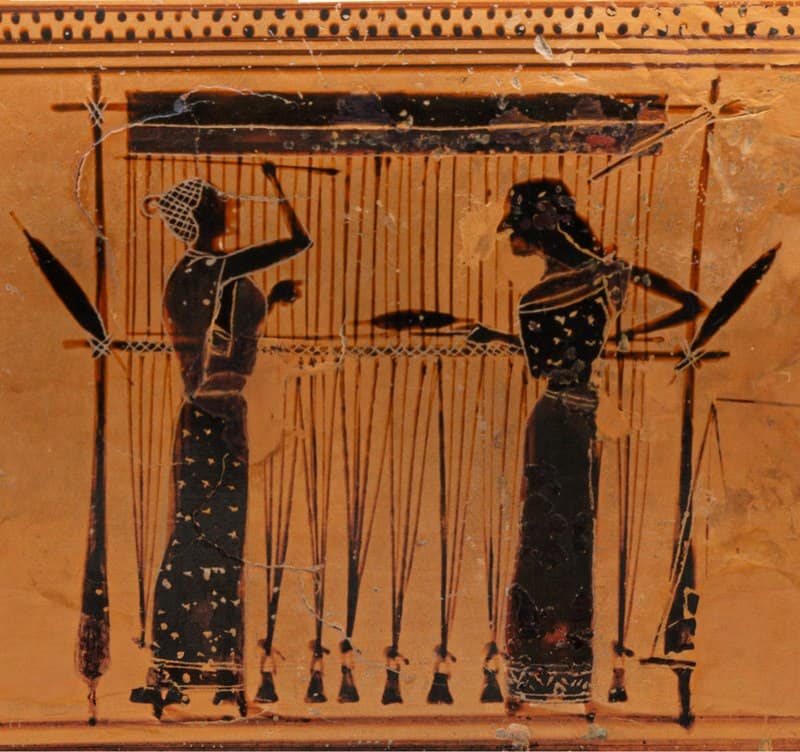
Weaving, one of the oldest known crafts, played a pivotal role in clothing production1. Early looms were basic, operated by hand, and required considerable skill to produce fabric.2 Weavers meticulously wove textiles using natural fibers like cotton, wool, silk, and linen, contributing to the creation of various garments.
Tailoring emerged as a specialized craft focusing on the art of garment construction3. In fact, the word first appears in written English in the 1297 edition of Oxford Dictionary borrowed from the French word tailler which meant to cut.4 Tailors meticulously cut and sewed fabric to create custom-made clothing. The craftsmanship involved precise measurements, intricate stitching, and attention to detail, resulting in garments tailored to fit individuals, showcasing a level of personalization and quality unmatched by mass-produced clothing.
Furthermore, dyeing techniques evolved, allowing for vibrant colors and intricate patterns on fabrics. Dyers utilized natural dyes sourced from plants, minerals, and insects, exhibiting a mastery of color extraction and application to textiles.5


Clothing production during this era was characterized by a deep connection between artisans and their craft. It was a labor-intensive process that valued quality, durability, and individuality. Garments were cherished possessions, often passed down through generations, reflecting the rich heritage of craftsmanship and meticulous artistry.
The early trades workers who dedicated themselves to clothing production laid the foundation for the art and science of garment-making. Their craftsmanship and dedication to quality set a precedent for the industry, emphasizing the importance of skill, expertise, and respect for materials in creating clothing.
Tailoring and the Rise of Industrial Methods in Garment-Making

The late medieval and early modern periods witnessed the evolution of tailoring, which notably shaped a distinct difference between the clothing of the common populace and the affluent upper classes. During the Renaissance era, the garments of nobility and royalty were meticulously crafted by skilled tailors. These lavish attire pieces showcased opulence through intricate embellishments, sumptuous fabrics like silk and velvet, and detailed embroidery.6
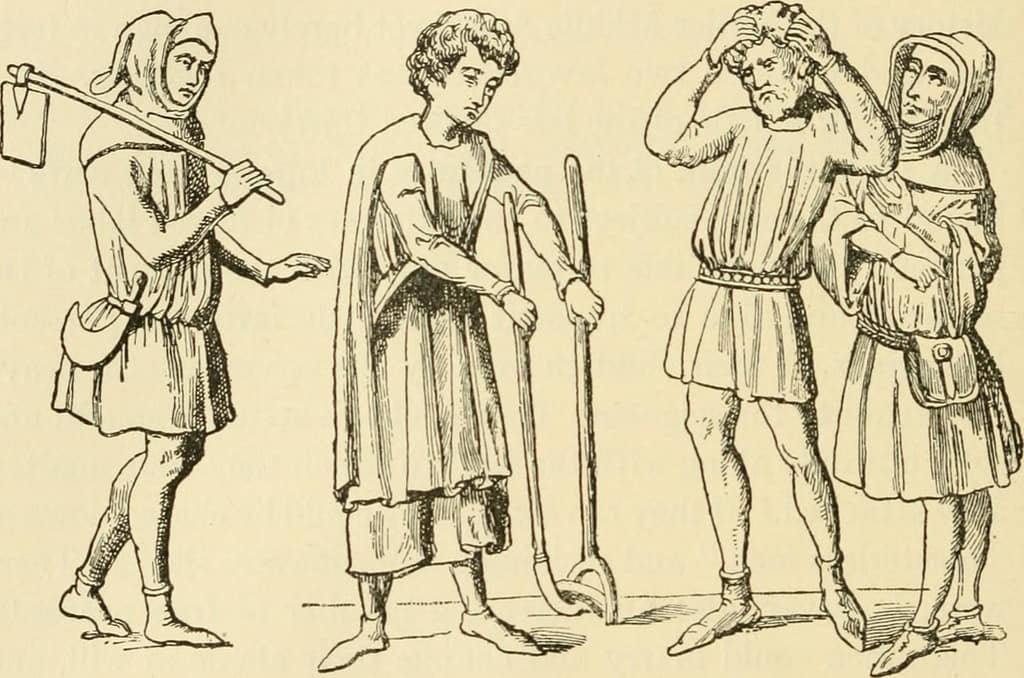
In contrast, the commoners and lower classes predominantly wore practical clothing made from durable materials such as wool, linen, or coarse cotton. Their attire was utilitarian, prioritizing durability and functionality over extravagance. The discrepancies in fashion between social classes were evident in fabric choices, intricate detailing, and tailoring techniques.7
Tailors during the pre-industrial era worked in a significantly different landscape than their modern counterparts. These artisans held vital roles in the community, respected for their expertise in creating bespoke clothing. The profession was often a hereditary one, passed down through generations, with apprenticeships as the primary mode of training.8
Their workshops, located in town or city centers, were centers of creativity and meticulous craftsmanship. Tailors meticulously crafted garments from scratch, beginning with precise measurements taken directly from clients. Each piece of clothing was tailored to fit the wearer’s body, emphasizing both comfort and style.
The tailoring process was intricate and time-consuming. Fabrics were cut by hand with precision using custom patterns. Pieces were stitched together using hand-sewing techniques to ensure superior quality and fit. Embellishments, intricate embroidery, and decorative details were often added, showcasing the tailor’s artistry and attention to detail.9
Despite their skill and craftsmanship, tailors faced challenges related to socio-economic status. Belonging to the skilled working class, they often endured long hours of labor, limited financial gains, and relied on patronage for sustenance.
Their livelihood depended on patrons from the affluent classes or commissions from local merchants. Fluctuations in income were common, especially during economic downturns or social unrest. The life of a tailor was characterized by dedication, precision, and an unwavering commitment to their craft, with each garment a testament to their expertise.10
The advent of the Industrial Revolution brought profound changes to the tailoring profession, transforming it from an artisanal craft to a mechanized and standardized process.11 This shift from handcrafted to mass-produced garments altered the trajectory of the industry, marking a significant transition in clothing manufacturing.
The tailoring profession underwent seismic changes during the Industrial Revolution, pivoting from an artisanal craft to a mechanized, standardized process. This transformative era, which emerged in the late 18th century, revolutionized garment production through mechanization and the introduction of power looms, streamlining textile manufacturing.12
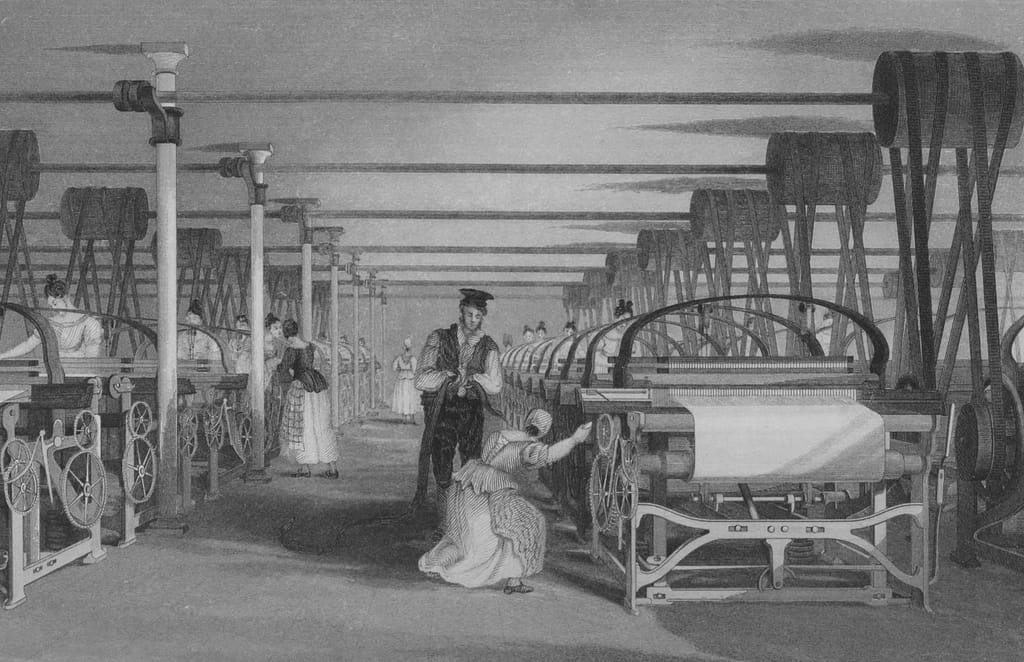
Mechanization reshaped the landscape of garment production, shifting from cottage industries to factories. Handcrafted garments slowly gave way to mass-produced textiles, marking a monumental shift in the tailoring industry’s trajectory.13 The introduction of power looms and mechanical innovations boosted efficiency and scalability in textile manufacturing.

This transformative period brought an influx of factory-made clothing, marking a significant milestone in accessibility and affordability. In the 19th century there was the development of ready-made garments, standardized sizes14, and increased textile availability democratized fashion, making stylish clothing more accessible to the growing middle class. However, it also marked a departure from bespoke tailoring and bespoke craftsmanship.
As clothing production shifted from handcrafted to machine-made, the exquisite and tailored intricacies that once characterized upper-class attire gradually diminished. The emphasis shifted toward practicality, mass production, and uniformity. The impact of the industrial revolution was profound, reshaping not just manufacturing processes but also societal dressing norms and perceptions of clothing.


The increased availability of factory-made clothing contributed to a more uniform appearance across social classes. While it bridged the gap in appearance, it also led to the decline of bespoke tailoring and the erosion of unique, handcrafted clothing that previously set the upper classes apart. The shift toward mass production marked a transition in societal dressing preferences, favoring practicality and uniformity over bespoke craftsmanship and individuality.
Despite the strides in accessibility and affordability, the craftsmanship and tailored intricacies that defined high-class attire began to wane. Garments became more utilitarian and less reliant on skilled artisans, signaling a significant change in clothing production and societal fashion trends. This period marked a turning point in the industry’s history, influencing clothing manufacturing methods and shaping modern dressing habits.
Cotton, Industrialization, and the Legacy of Exploitation

The rise of the power loom and the cotton industry during the Industrial Revolution transformed the garment manufacturing landscape. The demand for cotton increased exponentially, and the textile industry boomed, spearheaded by innovations like the power loom, which revolutionized the efficiency of textile production.

However, it’s essential to acknowledge the dark reality that underpinned this expansion. The cotton industry’s growth was intrinsically linked to the exploitative practices of the transatlantic slave trade, where enslaved individuals were brutally forced into labor on cotton plantations15. The profitable cotton industry significantly relied on this inhumane system, perpetuating the suffering and oppression of millions of enslaved people.
The boom in cotton production not only fueled the textile industry but also contributed to significant social and economic changes. The Enclosure Acts, which privatized common lands, further facilitated the increase in wool and cotton production by creating landless peasantry and expanding commercial agriculture.16
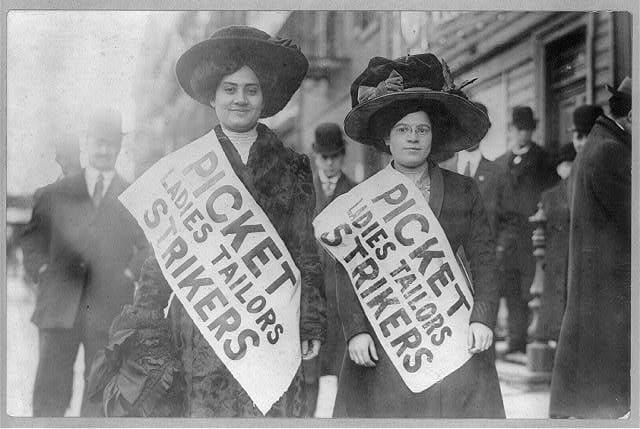
The industrialization of clothing manufacturing also led to the establishment of factories, bringing about a significant shift from handmade garments to mass-produced textiles. This transition marked a monumental change in the way clothing was produced, consumed, and perceived in society.
Simultaneously, the rise of factory-based production triggered labor movements and resistance among workers. The harsh conditions in factories, including long hours, low wages, and unsafe working environments, sparked protests and the formation of unions, advocating for improved working conditions and fair treatment.17
Clothing Choices: Paving the Way for an Equitable Sartorial Expression

The proliferation of the fashion industry in the wake of the Industrial Revolution signaled a new era in clothing production and accessibility. With the rise of ready-made garments and the standardization of sizing, individuals across social strata gained access to an array of clothing options previously limited to the privileged classes.
Classic menswear, with its emphasis on timeless elegance and refinement, introduced a subtle egalitarianism in sartorial expression. As tailored suits, waistcoats, and quality shirts became more widely available, they became symbolic markers of personal style rather than exclusive emblems of wealth or status. The art of dressing well transcended social boundaries, offering working-class individuals an opportunity to express themselves through well-crafted attire.

The shift toward more accessible clothing options for working people not only democratized fashion but also fostered a sense of individuality and self-expression. Classic menswear, rooted in tradition and craftsmanship, provided an avenue for men from diverse backgrounds to embrace a common language of style, irrespective of their socio-economic backgrounds.
This evolution in clothing choices marked a departure from the strict social stratification visible through attire, ushering in an era where personal taste and style became paramount. Classic menswear played a pivotal role in promoting a sense of identity and self-worth among individuals, offering them the opportunity to express their personality and dignity through their choice of attire.
Fashion Milestones: The 20th Century and Classic Menswear
The 20th century was marked by pivotal fashion milestones that significantly influenced classic menswear, shaping its aesthetics and defining its prominence in the realm of style.
1920s: The Roaring Twenties

The post-World War I era ushered in an era of liberation and cultural revolution. The “Roaring Twenties” witnessed a departure from traditional menswear as men abandoned the Victorian ideals of dress. Suits became more relaxed, adopting a looser fit with wide-legged trousers and shorter suit jackets. This period embraced bold patterns and colors, encapsulating the spirit of newfound freedom and creativity18. We also see increasingly common use of the wrist watch, though this trend started in the 1910s.
1930s: Hollywood and Sophistication
The 1930s saw a shift towards Hollywood-inspired elegance. Influential figures in the entertainment industry, like Cary Grant and Fred Astaire, epitomized sophistication and tailored refinement. This period emphasized sharp tailoring, structured silhouettes, and the iconic double-breasted suit, exuding timeless elegance and grace.19
1940s: Utility and Functionality
During World War II, fashion adapted to the practical needs of wartime. The focus shifted towards functionality and austerity, with military-inspired clothing influencing menswear. . With everything needing to be rationed due to the war effort, there was a push for less embellishment. According the the Gentleman’s Gazette, single breasted grey flannel suits with narrow lapel become more common as a way to save on fabric.20 The Wristwatch begins to be a
1950s: The Rise of Casual Elegance

The 1950s brought forth a shift towards casual elegance. Tailoring evolved to embrace a more relaxed yet refined aesthetic. The emergence of the sports coat as a versatile garment allowed for a blend of formal and casual styles. Icons like James Dean popularized a rebellious yet sophisticated look, contributing to the rise of the sports coat and its acceptance in diverse social settings.21
1960s: The Mod Movement and Bold Experimentation

The ’60s witnessed the rise of the mod fashion movement, introducing bold experimentation and unconventional styles. This period celebrated sleek, slim-cut suits and emphasized vibrant colors, geometric patterns, and shorter jackets. 22
1980s and 1990s: Power Dressing in Menswear
The ’80s and ’90s marked a return to power dressing, characterized by exaggerated silhouettes, strong shoulders, and bold patterns.23 This era celebrated modern elegance and sophistication, as exemplified by Giorgio Armani’s clean-cut, minimalist suits. T24he revival of the three-piece suit and the popularity of designer labels contributed to a resurgence of tailored menswear.
The Rise of Fast Fashion: Concerns, Controversies, and Environmental Impact
The latter part of the 20th century witnessed a paradigm shift in the fashion industry with the advent of fast fashion. Fast fashion is characterized by its rapid production cycles, offering trendy and inexpensive clothing to consumers at a quick turnover rate. However, this shift brought along a myriad of ethical and environmental concerns, significantly impacting the fashion landscape.
Exploitative Labor Practices and Working Conditions

One of the most prominent controversies surrounding fast fashion revolves around exploitative labor practices in garment-producing regions. Major fashion brands often outsource manufacturing to countries with lower labor costs, leading to substandard wages, poor working conditions, and limited worker rights. The 2013 Rana Plaza tragedy in Bangladesh highlighted the devastating consequences of this exploitative system. The collapse of an apparel factory claimed the lives of over a thousand workers, exposing the harsh realities of unsafe working environments and triggering global outrage and calls for better labor standards.25
Environmental Implications and Sustainability
The rapid pace of fast fashion has substantial environmental repercussions. The industry’s reliance on inexpensive, synthetic materials contributes to excessive waste and pollution. The utilization of non-biodegradable materials and chemical-intensive production processes leads to environmental degradation, water pollution, and increased carbon emissions. Moreover, the culture of disposable fashion contributes significantly to the mounting issue of textile waste in landfills, exacerbating environmental concerns.26
Scandals and Ethical Dilemmas
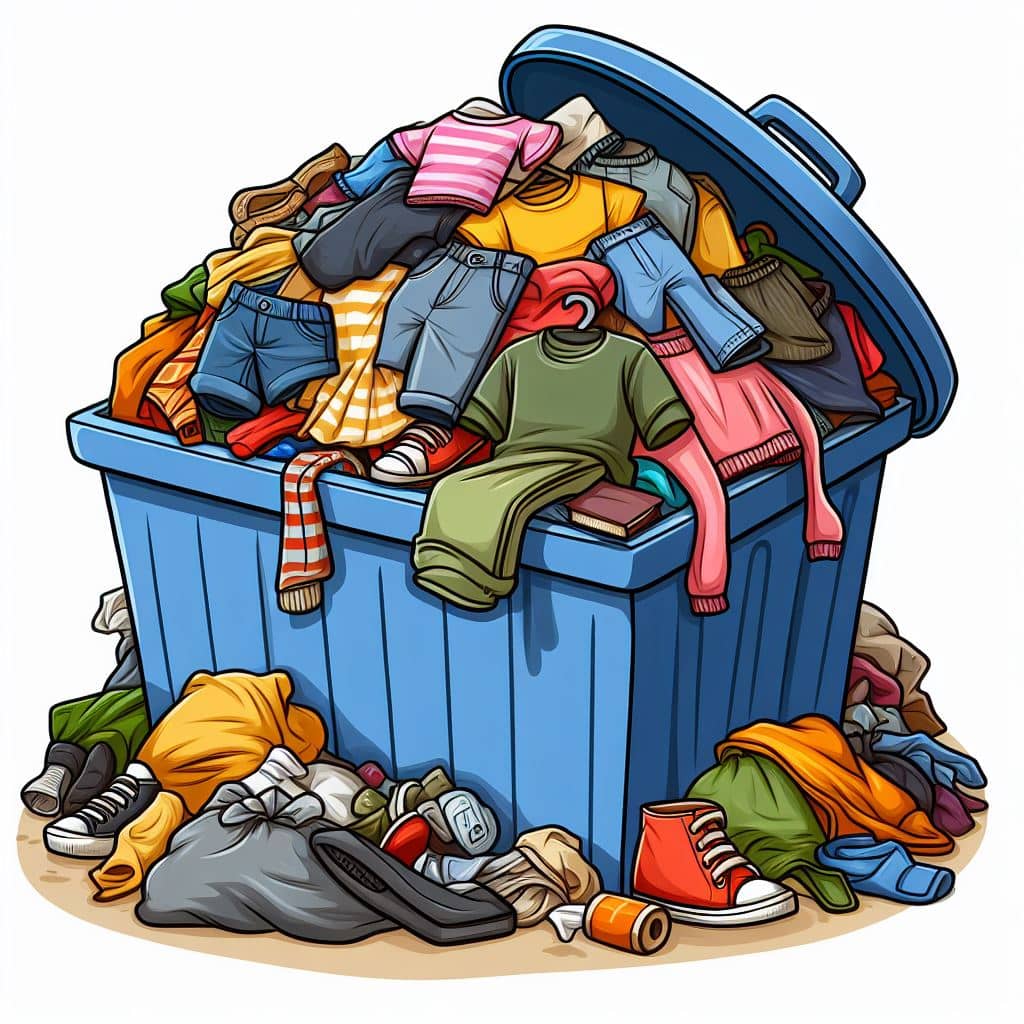
Fast fashion giants have faced various scandals and ethical dilemmas. Several major brands have been embroiled in controversies related to labor exploitation27, copyright infringement28, and inadequate safety standards in factories29. These instances have sparked public outcry, leading to calls for transparency and ethical accountability within the fashion industry.
Consumerism and Overconsumption
The rise of fast fashion is inherently linked to consumer demand for ever-changing trends at lower prices. The emphasis on disposable clothing and rapid turnovers has fueled a culture of overconsumption, encouraging frequent purchasing and discarding of garments.30 This unsustainable cycle contributes significantly to resource depletion and environmental strain.
Towards Sustainable Alternatives
In response to the ethical and environmental challenges posed by fast fashion, there has been a growing movement advocating for sustainable alternatives31. Initiatives promoting ethical production, transparency in supply chains, and a shift towards eco-friendly practices have gained momentum. Consumers are increasingly embracing slow fashion, favoring durable, timeless garments and supporting ethical brands that prioritize sustainability.
The rise of fast fashion has undoubtedly revolutionized the fashion industry, offering accessibility to the masses. However, the detrimental social, environmental, and ethical consequences associated with its rapid expansion underscore the pressing need for a more sustainable and ethical approach to fashion production and consumption.
Classic Menswear: Embracing Ethics in Fashion
In a world characterized by rapid trends and disposable fashion, classic menswear stands as a beacon of timeless elegance and enduring quality. Rooted in tradition and craftsmanship, classic menswear aligns seamlessly with the principles of the slow fashion movement, advocating for ethical practices, sustainability, and a return to quality craftsmanship.

The Timelessness of Classic Menswear

Classic menswear pieces such as tailored suits, sports coats, and quality accessories epitomize enduring style. These garments, crafted with meticulous attention to detail and using high-quality materials, transcend fleeting trends. Their durability, versatility, and timeless appeal make them not merely articles of clothing but symbols of refinement and sophistication.
Advocating for Sustainability
The ethos of classic menswear is intrinsically linked to sustainability. The modern gentleman recognizes the importance of investing in garments made from sustainable, natural materials. Embracing wool, cotton, linen, and other eco-friendly fabrics not only ensures durability but also reduces the environmental impact of clothing production. By favoring well-made, long-lasting pieces, the modern gentleman contributes to minimizing textile waste and supporting ethical production practices.
Craftsmanship and Ethical Practices

Classic menswear celebrates the art of craftsmanship and skilled tailoring. By valuing craftsmanship over mass production, the gentleman acknowledges the expertise of artisans and supports ethical working conditions. Prioritizing garments made by skilled artisans promotes fair labor practices and sustains the legacy of time-honored techniques.
The Role of the Modern Gentleman
As stewards of style and sophistication, the modern gentleman assumes a responsibility beyond fashion. Embracing a working-class ethics, the gentleman champions sustainable fashion choices, advocating for the preservation of craftsmanship, and embracing quality over quantity. By adopting a mindful approach to consumption and encouraging the appreciation of enduring style, the gentleman paves the way for a more sustainable and ethical fashion landscape.
In essence, classic menswear encapsulates not only timeless elegance but also a commitment to ethical fashion practices. Embracing sustainable materials, valuing craftsmanship, and advocating for ethical production, the modern gentleman embodies an ethos that extends far beyond clothing – one that embraces a timeless aesthetic while contributing to a more sustainable future.
References
- Choi, S. (2023, June 8). The history of Weaving and women. ECOIST. https://ecoist.world/blogs/eco-bliss/the-history-of-weaving-and-women ↩︎
- The history of woven textiles. (n.d.). https://www.tootal.nl/en/news/show/22/the-history-of-woven-textiles ↩︎
- THE HISTORY OF TAILORING. (2016, May 5). Alabama Chanin. Retrieved January 3, 2024, from https://alabamachanin.com/journal/2016/05/the-history-of-tailoring ↩︎
- ibid. ↩︎
- Cianci, L. (2023, February 23). Colour dyes: a (very) short history of dyes from around the world. Pressbooks. https://rmit.pressbooks.pub/colourtheory1/chapter/dyes-history-and-techniques/ ↩︎
- https://nationalclothing.org/702-burdens-of-life-of-european-medieval-and-renaissance-tailors.html ↩︎
- https://www.encyclopedia.com/humanities/culture-magazines/early-renaissance-styles ↩︎
- Burdens of life of European Medieval and Renaissance tailors – Nationalclothing.org. (2020, May 21). https://nationalclothing.org/702-burdens-of-life-of-european-medieval-and-renaissance-tailors.html ↩︎
- How Medieval and Renaissance clothing was made. Bonus – tailor’s tools – Nationalclothing.org. (2020, June 10). https://nationalclothing.org/712-how-medieval-and-renaissance-clothing-was-made-bonus-%E2%80%93-tailor%E2%80%99s-tools.html ↩︎
- Leed, D. (n.d.). Lizapalooza: Historic costume Research, Recreation and ruminations. http://www.elizabethancostume.net/blog/a-tailors-wage/ ↩︎
- How did the sewing machine impact the industrial Revolution? (2021, March 29). https://www.stocks.co.uk/blog/how-did-sewing-machine-impact-industrial-revolution.html ↩︎
- Belardes, R. (2023, July 18). Power Loom: an essential industrial revolution invention. HowStuffWorks. https://science.howstuffworks.com/innovation/inventions/power-loom.htm ↩︎
- The Spinning Jenny: A Woolen Revolution. (n.d.). Faribault Mill. https://www.faribaultmill.com/pages/spinning-jenny ↩︎
- Ashdown, S. P., & Aldrich, W. (2007). History of sizing systems and ready-to-wear garments. In Sizing in clothing: Developing effective sizing systems for ready-to-wear clothing (pp. 1–56). essay, Woodhead Pub. in association with the Textile Institute.
↩︎ - Beckert, S. (2014, December 12). Empire of Cotton. The Atlantic. https://www.theatlantic.com/business/archive/2014/12/empire-of-cotton/383660/ ↩︎
- Britannica, The Editors of Encyclopaedia. “enclosure”. Encyclopedia Britannica, 25 Feb. 2013, https://www.britannica.com/topic/enclosure. Accessed 3 January 2024. ↩︎
- ILGWU web site – History Early Struggles. (n.d.). https://ilgwu.ilr.cornell.edu/history/earlyStruggles.html ↩︎
- Mae, A. (2022, April 2). The Ultimate Guide to 1920s Men’s Fashion. He Spoke Style. https://hespokestyle.com/1920s-mens-fashion/ ↩︎
- A BRIEF HISTORY OF MEN’S FASHION. (n.d.). https://articlesofstyle.com/blogs/news/a-brief-history-of-mens-fashion ↩︎
- Lee, C. (2020, March 27). History of the Suit: The Evolution of Menswear from 1800 to Today. Gentleman’s Gazette. https://www.gentlemansgazette.com/evolution-of-menswear-suits/ ↩︎
- Schlueter, P. (2022, December 15). How To Dress Like James Dean (Style From A Hollywood Rebel) | Gentleman’s Gazette. Gentleman’s Gazette. https://www.gentlemansgazette.com/gentleman-style-james-dean-2/ ↩︎
- RebelsMarket. (2023, May 14). What was men’s fashion like in the 1960s? https://www.rebelsmarket.com/blog/posts/what-was-men-s-fashion-like-in-the-1960s ↩︎
- Ryall, J. (n.d.). escenic. The Telegraph. https://www.telegraph.co.uk/men/fashion-and-style/10571621/The-rehabilitation-of-the-power-suit.html ↩︎
- Forgeard, V. (2023, July 5). Glamour & Grit: What Influenced Fashion In The 1980s – Brilliantio. Brilliantio. https://brilliantio.com/what-influenced-fashion-in-the-1980s/ ↩︎
- The Rana Plaza disaster ten years on: What has changed? (n.d.). InfoStories. https://www.ilo.org/infostories/en-GB/Stories/Country-Focus/rana-plaza ↩︎
- SHEDLOCK, K., & FELDSTEIN, S. (2023). At What Cost?: Unravelling the Harms of the Fast Fashion Industry. Center for Biological Diversity. Retrieved January 3, 2024, from https://www.biologicaldiversity.org/programs/population_and_sustainability/pdfs/Unravelling-Harms-of-Fast-Fashion-Full-Report-2023-02.pdf ↩︎
- Workers owed $11.85 billion after fashion brands’ inaction. (2023, August 17). Clean Clothes Campaign. https://cleanclothes.org/news/2021/workers-owed-1185-billion-after-fashion-brands-inaction ↩︎
- Lieber, C. (2018, April 27). Fashion’s copycat problem: why brands like Zara get away with rip-offs. Vox. https://www.vox.com/2018/4/27/17281022/fashion-brands-knockoffs-copyright-stolen-designs-old-navy-zara-h-and-m ↩︎
- Unsafe workplaces. (2020, June 24). Clean Clothes Campaign. https://cleanclothes.org/unsafe-workplaces ↩︎
- Overconsumption in the fashion industry : Fashion Revolution. (2022). https://www.fashionrevolution.org/overconsumption-in-the-fashion-industry/ ↩︎
- UN Alliance For Sustainable Fashion addresses damage of ‘fast fashion.’ (2019). UN Environment. https://www.unep.org/news-and-stories/press-release/un-alliance-sustainable-fashion-addresses-damage-fast-fashion ↩︎

